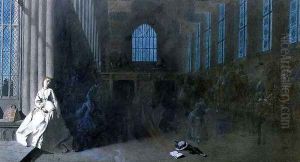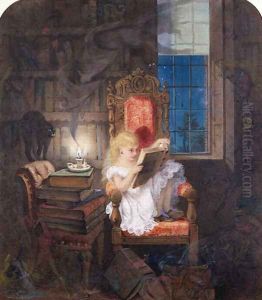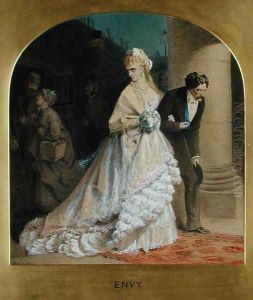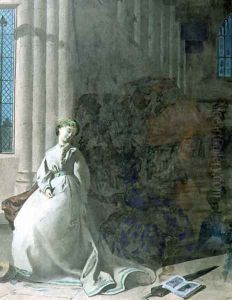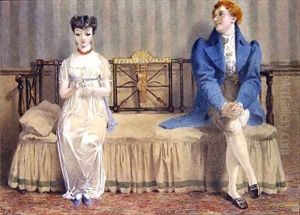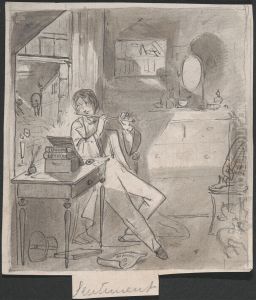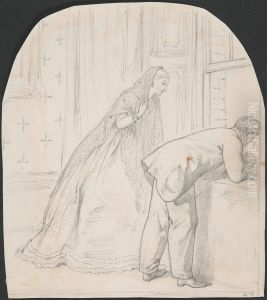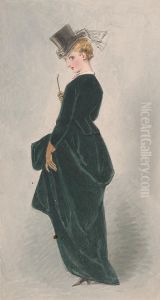Adelaide Claxton Paintings
Adelaide Claxton was an English painter and illustrator, born in 1830 in London. She came from a family with artistic inclinations; her father, Marshall Claxton, was a respected artist, and her sister Florence followed in their father's footsteps. This environment nurtured Adelaide's artistic talents from a young age, and she quickly developed her own unique style. Claxton's work was diverse, spanning from illustrations for children's books to satirical pieces for magazines, and she was particularly noted for her detailed watercolors and oil paintings which often depicted scenes of Victorian life with a keen eye for detail and a subtle sense of humor.
Throughout her career, Adelaide Claxton faced the gender biases prevalent in the Victorian art world. Despite these challenges, she achieved significant recognition for her work. She exhibited at the Royal Academy and other notable galleries, a remarkable accomplishment for a woman of her time. Her illustrations appeared in prestigious publications, including Punch and The Illustrated London News, showcasing her versatility and skill in capturing the essence of her subjects with both wit and sensitivity.
Claxton was also an innovator, credited with inventing a type of Valentine's card that featured a hidden message, a novelty that became quite popular in her day. This invention reflects her creative spirit and her ability to engage with the commercial aspects of the art world, a necessity for many artists of her time.
Despite her contributions to Victorian art and culture, Adelaide Claxton's name is not as widely recognized today as some of her contemporaries. The reasons for this are complex, involving the traditional marginalization of women's achievements in many fields, including the arts. However, in recent years, there has been a growing interest in rediscovering and reevaluating the work of women artists of the past, and Claxton's oeuvre is receiving new attention from scholars and art enthusiasts alike.
Adelaide Claxton passed away in 1902, leaving behind a legacy of artistic innovation and perseverance. Her life and work offer valuable insights into the challenges and achievements of women artists in the Victorian era, making her an important figure in the history of British art.
